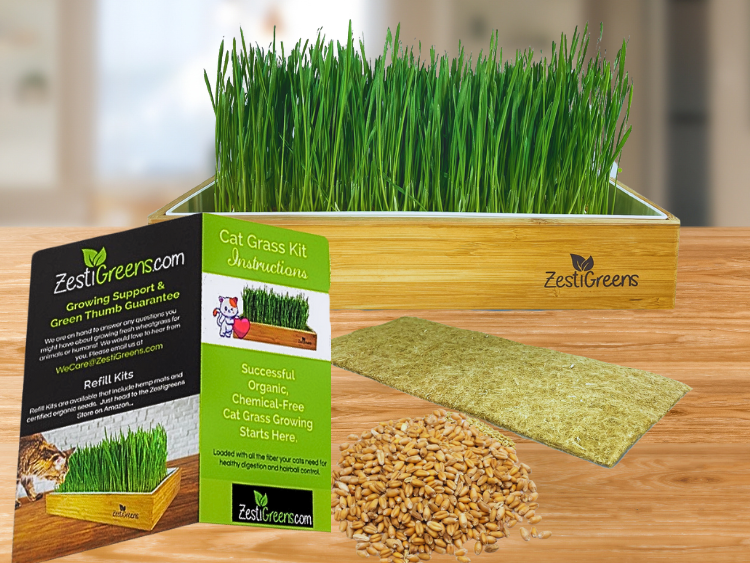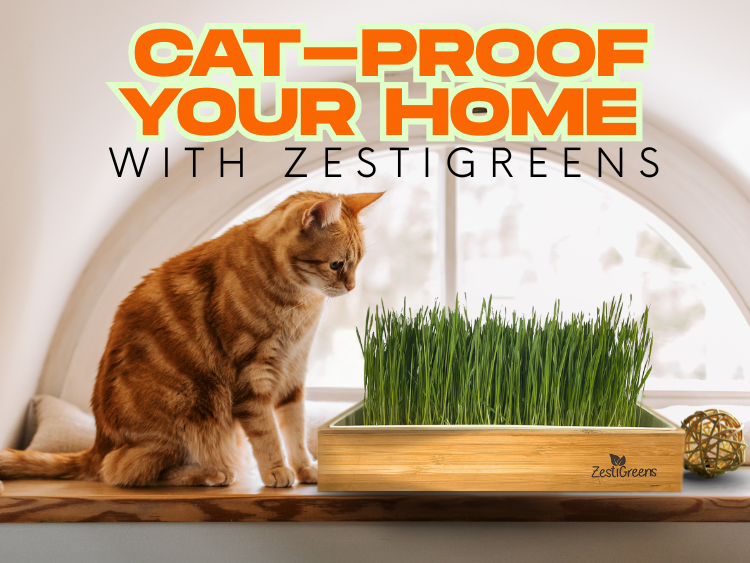The Ultimate Guide to Growing Cat Grass at Home: Tips for a Thriving Indoor Garden
If you’re a cat parent, you’ve probably noticed your feline friend’s fascination with grass. But did you know that growing cat grass at home offers more than just entertainment? It provides essential nutrients, aids digestion, and helps prevent hairballs—all while giving your pet a safe and chemical-free snack.
In this guide, you’ll learn how to easily grow cat grass indoors, from seed to sprout, with expert tips to keep it thriving. Whether you’re a seasoned gardener or a complete beginner, you’ll have a lush patch of cat grass in no time.
What Is Cat Grass? 🌿🐾
Cat grass refers to specific types of grass that are safe and beneficial for cats to nibble on. It typically includes wheatgrass, barley, oat, or rye grass. Unlike regular lawn grass—which may contain pesticides or fertilizers—cat grass is grown indoors from untreated seeds, making it safe for feline consumption.
Why Do Cats Eat Grass?
Cats naturally graze on grass for several reasons:
- Digestive aid: Grass helps cats expel indigestible matter, such as fur or bones, through regurgitation or improved digestion.
- Hairball control: The fiber content reduces the formation of hairballs by aiding elimination.
- Nutritional boost: Cat grass contains folic acid, which supports oxygen transport in the blood and promotes healthy cell growth.
- Stress relief: Chewing on grass provides sensory stimulation and can help reduce boredom or anxiety.
🌿 Benefits of Growing Cat Grass at Home
While you can buy pre-grown cat grass from pet stores, growing it yourself offers several advantages:
- Freshness and quality: Homegrown grass is free from chemicals and pesticides.
- Cost-effective: A single batch of seeds yields multiple harvests, saving you money.
- Continuous supply: With staggered plantings, you can ensure your cat always has access to fresh grass.
- Enrichment: Tending to an indoor cat grass garden can be a fun and rewarding activity.
🌿 What You Need to Grow Cat Grass Indoors
Before you start, gather the following supplies:
- Cat grass seeds: Choose high-quality, non-GMO seeds like wheatgrass or barley from ZestiGreens.
- Growing container: A shallow tray or pot with drainage holes works best.
- Potting soil or growing medium: Organic potting soil is ideal, but you can also use coconut coir or hemp mats.
- Spray bottle: For gentle, even watering.
- Sunlight or grow light: A bright spot with indirect sunlight or an LED grow light encourages healthy growth.
🌿 Step-by-Step Guide to Growing Cat Grass
1. Prepare the Seeds
Soak the seeds in water for 8-12 hours or overnight. This softens the outer shell and speeds up germination.
2. Fill the Container with Soil
Add 1-2 inches of potting soil or growing medium to your container. Lightly press the soil down but avoid compacting it.
3. Plant the Seeds
Spread the soaked seeds evenly over the soil. Sprinkle a thin layer of soil on top—just enough to cover the seeds.
4. Water and Cover
Mist the soil gently with a spray bottle. To create a humid environment, cover the container with plastic wrap or place it inside a plastic bag. This boosts germination by retaining moisture.
5. Let It Sprout
Place the container in a warm spot away from direct sunlight. Within 2-4 days, you’ll see tiny sprouts emerging.
6. Remove the Cover and Water Regularly
Once the grass is about an inch tall, remove the cover. Water lightly whenever the soil feels dry. Avoid overwatering, as it can lead to mold growth.
7. Harvest and Serve
When the grass reaches 4-6 inches (typically in 7-10 days), it’s ready to serve. Let your cat graze directly from the container or snip small portions and place them in their feeding area.
💡 Tips for Thriving Cat Grass
- Use fresh seeds: Always start with high-quality seeds for better germination and healthier grass. ZestiGreens offers premium cat grass seeds known for their consistency and freshness.
- Prevent mold: Ensure proper drainage and avoid overwatering to keep mold at bay.
- Rotate batches: For a steady supply, plant a new batch every 1-2 weeks.
- Provide adequate light: If natural light is limited, use a small grow light to maintain healthy growth.
Troubleshooting Common Issues
1. Grass Turning Yellow
- Cause: Overwatering or insufficient light.
- Solution: Water only when the soil feels dry and place the grass in a brighter spot.
2. Moldy Soil
- Cause: Excess moisture and poor airflow.
- Solution: Use a container with drainage holes and water lightly. Ensure the grass gets good air circulation.
3. Slow or No Germination
- Cause: Old seeds or low-quality soil.
- Solution: Use fresh seeds and nutrient-rich soil from a trusted source like ZestiGreens.
🌿 Why Choose ZestiGreens for Your Cat Grass Needs?
At ZestiGreens, we’re passionate about providing top-quality sprouting seeds and growing supplies. Our cat grass seeds are carefully selected for their freshness and high germination rates, ensuring your pet enjoys a safe and healthy treat.
By choosing ZestiGreens, you’ll have everything you need to grow thriving cat grass indoors—with guaranteed results.
Final Thoughts
Growing cat grass at home is a simple, rewarding, and cost-effective way to enhance your cat’s well-being. With just a few supplies and a little care, you can provide your furry companion with a continuous supply of fresh, nutritious greens.
Explore ZestiGreens’ premium cat grass seeds and start cultivating a healthy indoor garden today. Your cat will love it—and you’ll enjoy the satisfaction of growing it yourself.









